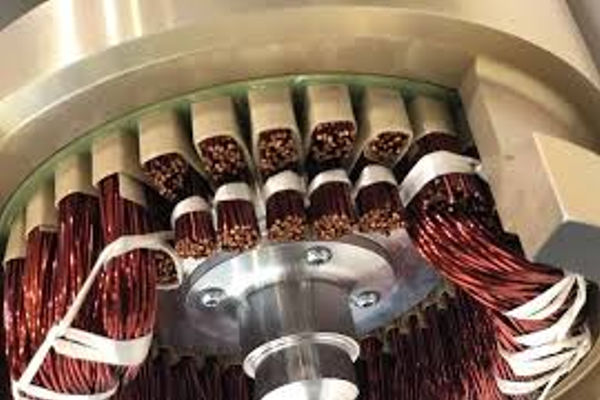The electric vehicle (EV) market continues to grow; however, its growth has slowed significantly in Europe and the US in the first half of 2024. A key route to reinvigorating growth will be the release of models in a more affordable price range. To this end, there are many avenues to lower cost EVs. While the battery rightly takes focus, other components throughout the vehicle, such as the electric motor, can contribute to cost reduction too.
IDTechEx’s latest report, “Electric Motors for Electric Vehicles 2025-2035: Technologies, Materials, Markets, and Forecasts”, analyses the current technology and materials landscape for electric motors in EVs and forecasts the future trends and demands for the next 10 years. IDTechEx forecasts that over 160 million electric motors will be required for the EV market in 2035 with approximately 30% of the automotive market using rare earth free technologies in the same year.
Improving Performance to Reduce Battery Demands
The first way a motor can reduce vehicle cost is through driving efficiency. Vehicles are generally designed to maximize range on test cycles (such as WLTP or CLTC) and/or in real-world driving scenarios. The more efficient a motor is, the more range can be obtained from the same battery capacity. For example, if a motor has an efficiency of 96% rather than 93%, then this could decrease the energy needed for a 75kWh vehicle by around 2.9% to achieve the same range. In turn, this reduces the battery cost by the same amount, for a 75kWh vehicle with a battery cost around US$100/kWh, could see a reduction in battery price per vehicle of around US$200.
Materials vs Manufacturing Costs in the Motor
The price of magnets and copper in EV motors have been susceptible to significant volatility, but magnet free designs are more stable. Source: IDTechEx
Permanent magnet (PM) motors dominate the EV market with an 85% market share in battery electric and plug-in hybrid cars in 2023 according to IDTechEx. The permanent magnets used in these motors contain rare earths and can be very costly; in fact, despite them being a relatively small part of the motor, they often take up around a third of the motor’s bill of materials. The historic price of these rare earths has also been very volatile; since 2010, the maximum price of neodymium was nearly 5 times higher than its minimum.
Other magnet free motors, such as wound rotor synchronous motors (WRSM, sometimes called externally excited synchronous motors, EESM), have a lower bill of materials cost due to replacing permanent magnets with copper windings. However, these are more expensive to manufacture, with winding required on the rotor, a mechanism for providing a current to the rotor, and the associated control electronics. Their efficiency is typically lower on the WLTP cycle, although often better for high speed cruising. To offset the manufacturing costs and efficiency loss, the price of PM materials would have to be at a high point to make a WRSM motor competitive on system cost directly.
Rare earth free magnets are another future solution, these magnetic materials are much less costly, but sacrifice performance. Rare earth free magnets such as ferrites or AlNiCo can be competitive with Nd magnets in certain magnetic properties but not across all the key properties. The upshot of this is requiring more magnetic material and sacrificing power density, therefore requiring a larger motor for the same performance. With the goal of producing a low-cost vehicle, this could be an approach taken; a much lower-performance motor could be installed and still be sufficient for a small city car. However, due to the large performance deficit these magnets have, the rotor’s manufacturing costs can be increased to pack in enough magnetic material.
The takeaway is that alternatives to rare earth permanent magnet motors will only be cost-competitive in the scenario where rare earth magnet prices are high. There are other reasons to switch away from rare earths though, including environmental friendliness and supply chain security.
IDTechEx Outlook
Despite the challenges, in its report on “Electric Motors for Electric Vehicles 2025-2035: Technologies, Materials, Markets, and Forecasts”, IDTechEx is predicting that magnet free motor technologies will take up 30% of the automotive motor market in 2035 (including battery electric and hybrid cars), up from just 9% in 2023. Supply chain security is becoming a larger focus, the historic volatility of rare earth prices is a concern, and rare earth free magnet technology is improving. While the price of the motor may not be the largest concern in the overall price of an EV, it can certainly play a significant role, and innovations in motor technology continue to progress.
Could Axial Flux Play a Role?
In the future, axial flux motors could play a larger role in cost reduction. Given their very high power and torque density, the material utilization per kW of power can be significantly reduced. Given most of a motor’s cost is in the bill of materials, this could enable another route to cost reduction. However, axial flux motors have not yet been manufactured at the scale required for the automotive market. Not to say that they couldn’t be, their manufacturing is simpler than many historic automotive components, but they need to overcome a well-entrenched radial flux motor industry and find the right manufacturing partners to get there. IDTechEx predicts a growth in the axial flux motor market, but it will require time to start to get to the volumes that are normally associated with automotive motor technologies.













